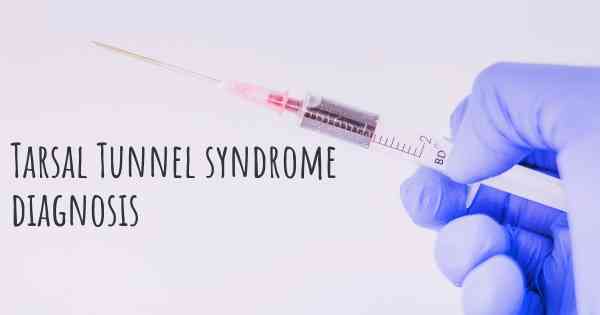How is Tarsal Tunnel syndrome diagnosed?
See how Tarsal Tunnel syndrome is diagnosed. Which specialists are essential to meet, what tests are needed and other useful information for the diagnosis of Tarsal Tunnel syndrome

Diagnosis of Tarsal Tunnel Syndrome
Tarsal Tunnel Syndrome (TTS) is a condition that occurs when the tibial nerve in the ankle becomes compressed or irritated. It can cause pain, numbness, and tingling in the foot and ankle. To diagnose TTS, healthcare professionals employ a combination of medical history, physical examination, and diagnostic tests.
Medical History: The first step in diagnosing Tarsal Tunnel Syndrome is discussing the patient's symptoms and medical history. The healthcare provider will inquire about the nature, duration, and intensity of the pain, as well as any factors that worsen or alleviate it. They may also ask about previous injuries or medical conditions that could contribute to nerve compression.
Physical Examination: A thorough physical examination is crucial in diagnosing Tarsal Tunnel Syndrome. The healthcare provider will assess the foot and ankle, looking for signs of swelling, tenderness, or muscle weakness. They may perform specific maneuvers to reproduce the patient's symptoms, such as tapping over the tibial nerve or flexing the foot.
Diagnostic Tests: In some cases, additional tests may be necessary to confirm the diagnosis of Tarsal Tunnel Syndrome. These tests can include:
- Nerve Conduction Studies (NCS): NCS measures the speed and strength of electrical signals as they travel along the nerves. This test can help determine if there is nerve damage or compression in the tarsal tunnel.
- Electromyography (EMG): EMG measures the electrical activity of muscles. It can help identify if there is muscle weakness or nerve dysfunction associated with Tarsal Tunnel Syndrome.
- Magnetic Resonance Imaging (MRI): An MRI scan can provide detailed images of the foot and ankle, allowing healthcare professionals to visualize any abnormalities, such as tumors or cysts, that may be causing nerve compression.
It is important to consult with a healthcare professional for an accurate diagnosis of Tarsal Tunnel Syndrome. They will consider the patient's symptoms, medical history, and the results of physical examination and diagnostic tests to determine the most appropriate treatment plan.








